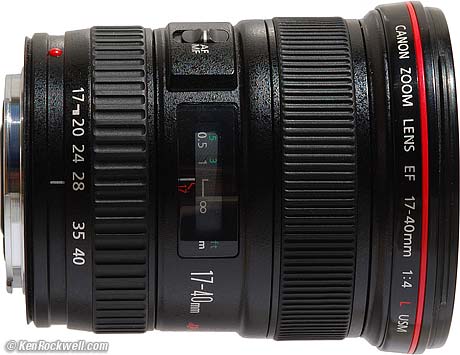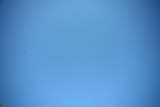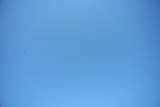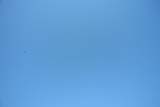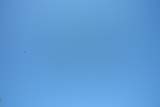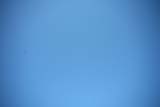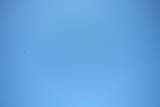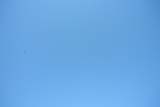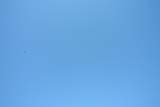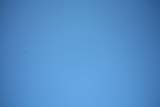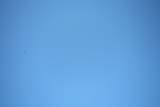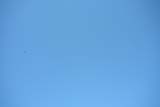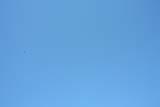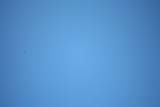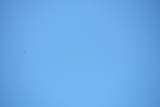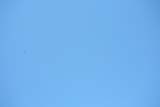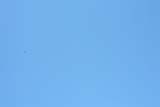FILTERS
Back to Performance. Back to Introduction. Back to Top.
The 17-40mm f/4 L works great with any conventional filter, even on a full-frame camera. There is no need to pay extra for thin filters.
I love filters, and often use two or three on top of each other.
Even on my full-frame 5D I can use two fat ,rotating-mount filters (13.7mm thick combined, excluding threads) at as wide as 24mm. This includes my conventional Hoya 77mm Circular Polarizer and my Tiffen 0.6 ND rotating grad.
There are even fewer issues on smaller sensor cameras. I doubt you'll ever have any problems, and if you're afraid you might, just look at your LCD.
With a thin B+W filter (4.4mm thick excluding threads) and my 7mm thick conventional Hoya 77mm Circular Polarizer at the same time I got perfect results as wide as 20mm on my full-frame camera.
FLARE AND GHOSTS
Back to Performance. Back to Introduction. Back to Top.
You'll get some ghosts if you have the sun in your image.
It's not as bad as the 16-35mm L, but not as good as the 10-22mm EF-S.
Roll your mouse over these first two examples to compare the 17-40mm to the 16-35mm:

17-40mm at f/4. Roll mouse over to compare with 16-35mm at f/4.
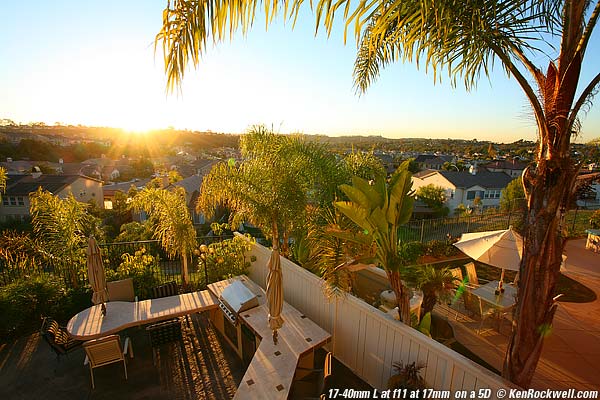
17-40mm at f/11. Roll mouse over to compare with 16-35mm at f/11.
Roll your mouse over this example to see the contribution of a single-coated B+W F-PRO 010 UV filter.

17-40mm at f/11, no filter. Roll mouse over to add a filter.
I see an additional green ghost in center-left. No big deal. This is with a single-coated filter. A multi-coated filter will have even less effect.
USE with FLASH
Back to Performance. Back to Introduction. Back to Top.
Built-in flashes are often so close to the camera that ultrawide lenses can see far enough down to see their shadow cast by a built-in flash.
Using this lens on a 1.6x camera is a waste of a great lens, but if you do, you'll get a shadow at 17mm. It's fine at 19mm and longer, at reasonable distances of 6 feet (2m) or more.
If you get closer, like a couple of feet (1m) or closer, stay at 24mm or longer.
If this becomes a problem, hold the camera upside down so the shadow goes into the top of the picture where it's less likely to be a problem.
Shoe-mount flashes are far enough forward that the shadows aren't seen by wide lenses.
MACRO
Back to Performance. Back to Introduction. Back to Top.
If you have a 1.6x camera (30D, 20D, Rebel), then Canon's cheapest lens, the 18-55mm, gets much closer.
Ultrawide lenses are stupid for macro. All they usually do is get you hurt by standing too close.
That said, the 17-40mm isn't very good at it anyway. There tends to be a shift in focus which causes the focus to be behind your intended subject.
Here's as close as it gets at 11" (28cm) at 40mm, full frame. A 1.3x or 1.6x camera would show a larger image due to the crop factor.
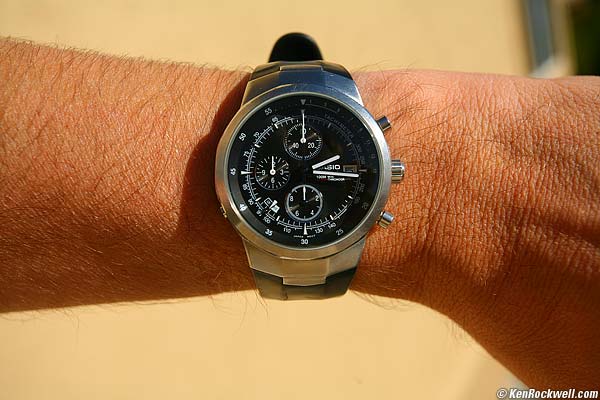
at 11' (28cm) at 40mm, f/8, full image, full-frame 5D.
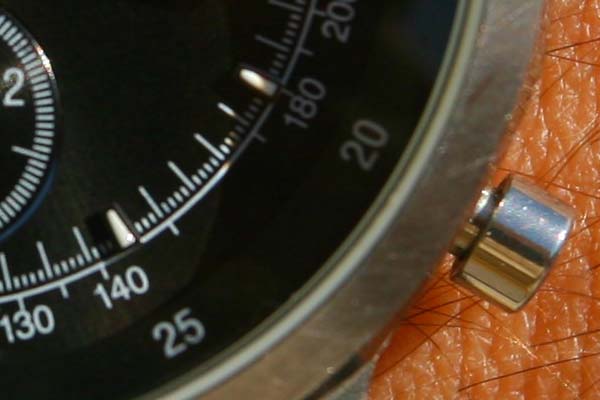
100% crop from above, no extra sharpening. It focused on me, not my watch.
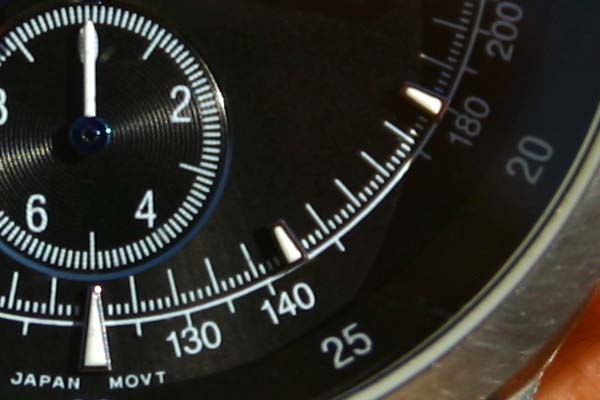
100% crop, ideal result with manual focus, trial-and-error, f/4.
If I cheat and use manual focus and move the subject back and forth and cherry-pick the sharpest result, I can get a better result.
Typically my 5D focuses this lens a quarter-inch (5mm) behind the intended subject. At f/8 as shown in the top example there's so little depth of field that it's obvious.
Get the superb 100mm f/2.8 USM if you want macro.
SERIAL NUMBER
Back to Performance. Back to Introduction. Back to Top.
The serial number is engraved and filled with black paint on the lens mounting flange. It's on the bottom side as you point the lens away from you with the top up. It's engraved in the recess of the surface that mates with the camera, which will make it difficult for the forces of evil to remove without destroying the lens.
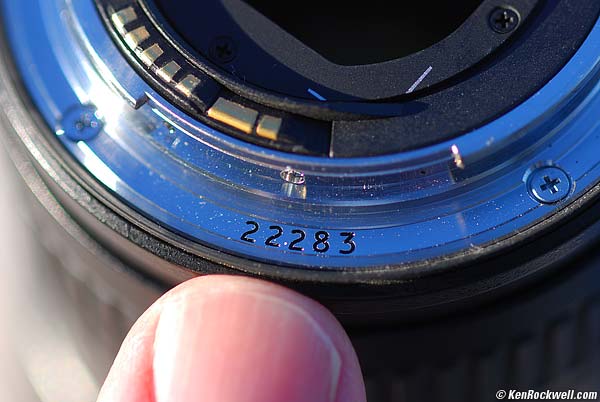
Engraved and painted serial number.
SHARPNESS
Back to Performance. Back to Introduction. Back to Top.
Sharpness is fantastic. It makes me want to overlook the awful LCD and ergonomic shortcomings of my full-frame Canon 5D. When I saw this shot I realized I was in new territory.
Here's a grab shot, hand-held:
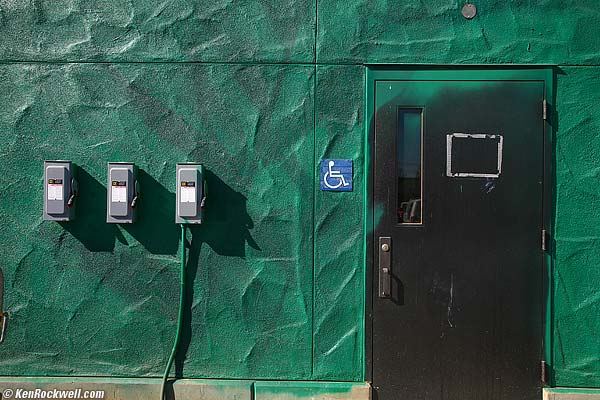
Wall, 17-40mm at 31mm, f/8 @ 1/125, ISO 50, Canon 5D. original 6MB JPG.
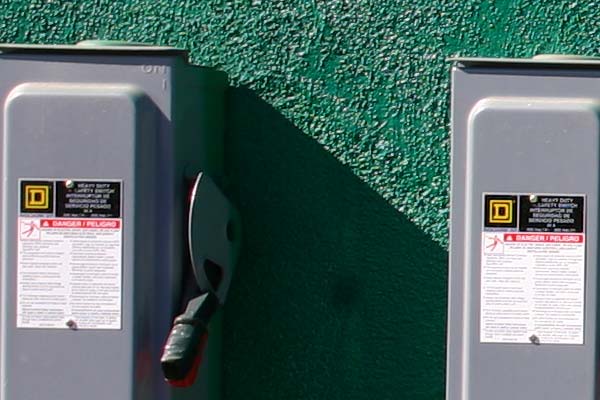
100% crop of above.
This blow-up is less than 2% of the complete image, This would be 44" (1.1m) wide if I showed the full image!
That was unsharpened, from a Large Normal (more compressed) JPG from my 5D. Let's add a little sharpening to it:
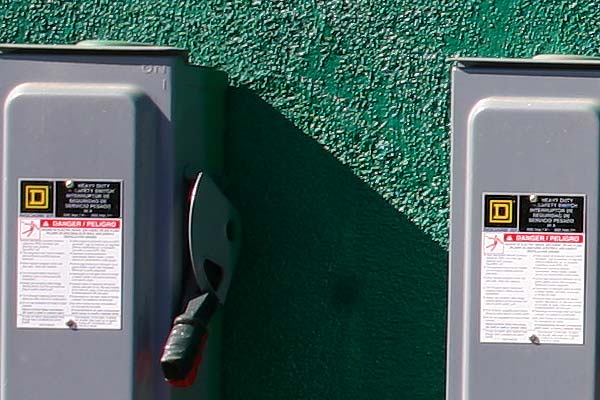
Not bad for a 44" wide print!
Of course if I look for problems instead of taking pictures I can always find them. The weak point for sharpness for any wide zoom is the corners at the widest setting, wide open. Canon's own MTF curves confirm this. Here's a full image:
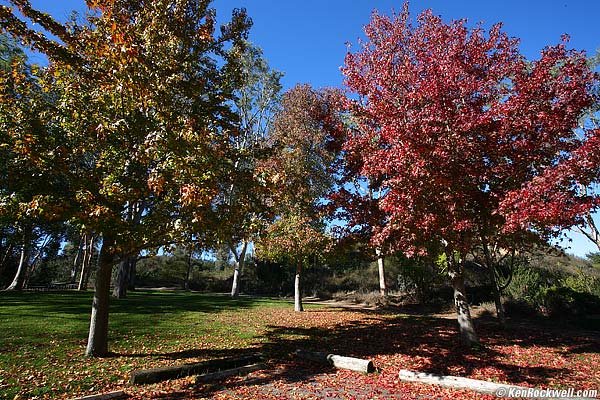
Trees, 17-40mm at 17mm, f/16 @ 1/20, ISO 50, Canon 5D. original 6MB JPG
And here's the extreme upper left corner at 100%. This blow-up is less than 2% of the complete image:
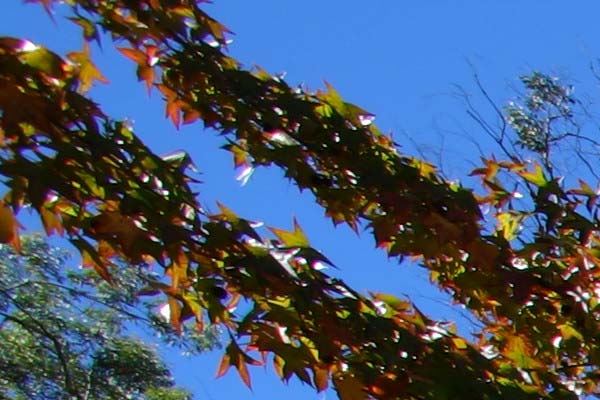
100% crop, 17-40mm at 17mm, f/16 @ 1/20, ISO 50, Canon 5D.
Not bad. You'd have to be looking at a 44" wide print this close to see this. Let's start opening the aperture and see what happens in this unreasonably worst possible case.
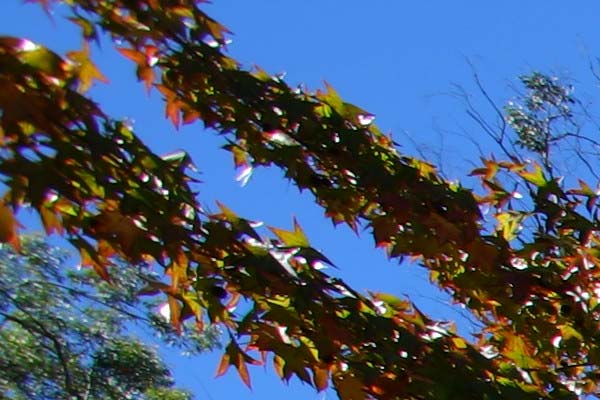
100% crop, 17-40mm at 17mm, f/11 @ 1/40, ISO 50, Canon 5D.
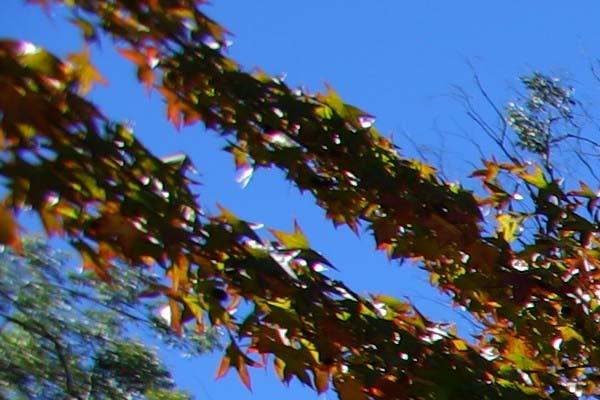
100% crop, 17-40mm at 17mm, f/8 @ 1/80, ISO 50, Canon 5D.
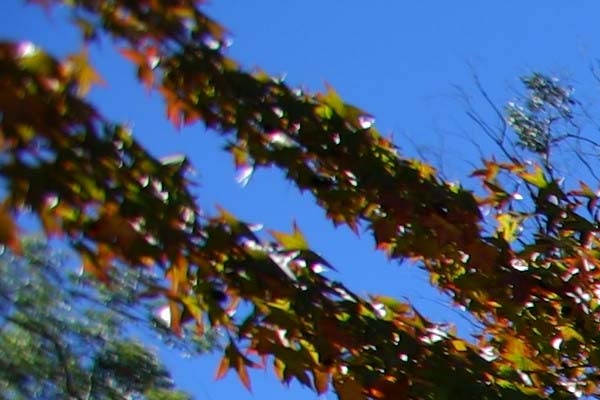
100% crop, 17-40mm at 17mm, f/5.6 @ 1/160, ISO 50, Canon 5D.
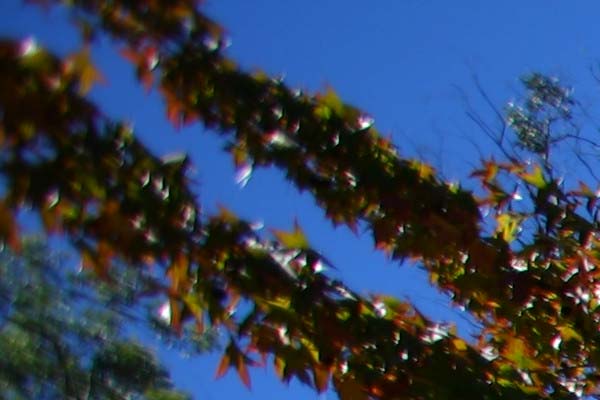
100% crop, 17-40mm at 17mm, f/4 @ 1/320, ISO 50, Canon 5D.
This is swell performance. It's almost impossible to contrive a subject like this with in-focus details in the farthest corners, and even then anyone shooting in broad daylight on a tripod at f/4 like this is an idiot. To put this idiotic abuse in perspective, here's the full shot at f/4:
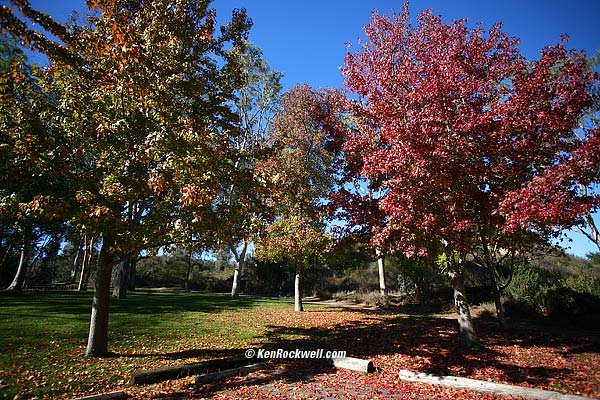
Trees, 17-40mm at 17mm, f/4 @ 1/320, ISO 50, Canon 5D. original 6MB JPG.
Even wide open, your technique will be your biggest barrier to sharp photos. The 17-40mm L is sharper than most photographers' abilities. I have a page on How to Get Sharp Photos.
Diffraction is usually the sharpness-limiting factor for all lenses, especially on digital SLRs, at about f/11 and above. See How Sharpness Varies with Aperture.
Here are my letter grades. Possible ratings are E - VG - G - F - P. These are subjective. Don't fret over differences between adjacent grades.
On a Full-Frame Canon 5D:
These are for center - side - far corner, looking at 100%.
|
f/4 |
f/5.6 |
f/8 |
f/11 |
17mm |
VG - F - P |
E - F - P |
E - VG - F |
E - VG - VG |
20mm |
E - G - P |
E - VG - P |
E - VG - F |
E - E - VG |
28mm |
E - G - G |
E - VG - G |
E - E - E |
E - E - E |
40mm |
E - VG - VG |
E - E - E |
E - E - E |
E - E - VG |
On a 1.3x Canon 1D series:
These are for center - far corner, looking at 100%.
|
f/4 |
f/5.6 |
f/8 |
f/11 |
17mm |
VG - F |
E - F |
E - VG |
E - VG |
20mm |
E - G |
E - VG |
E - VG |
E - E |
28mm |
E - G |
E - VG |
E - E |
E - E |
40mm |
E - VG |
E - E |
E - E |
E - E |
It's as sharp on a Rebel XTi or 30D, but who cares?
IS (Image Stabilization)
Back to Performance. Back to Introduction. Back to Top.
The 17-40mm f/4 L has NO image stabilization. It's so wide that this isn't a problem. You can hand-hold it much slower than a normal lens.
TIP: In dim light, fire several shots and pick the sharpest. Blur is a random event, so if you fire enough shots, you'll eventually get a sharp one even at speeds of 1 second!
ZOOMING
Back to Performance. Back to Introduction. Back to Top.
The 17-40mm L zooms easily with one fingertip, regardless of the direction in which its pointed.
It has the largest range of any ultra-wide zoom: 2.4 : 1. This lets it zoom from ultrawide (17mm) all the way to normal (40mm).
Zoom Creep
None, regardless of orientation.
Focus Shift while Zooming
Minimal. Focus stays reasonably stable as you zoom.
Focal Length Encoding Accuracy
The EXIF data agrees with the settings marked on the lens at 17, 20, 24 and 40mm. 28mm reads 29mm and 35mm reads 36mm, no big deal.
I have not correlated the accuracy of the markings to the actual focal lengths.
Focal Length Encoding Precision
I see every millimeter accounted for in the EXIF data, except for 18mm.
In other words, I'll see 17mm, 19mm, 20mm, 21mm, 22mm, 23mm, 24mm, 25mm, 26mm, 27mm, 28mm, 29mm, 30mm, 31mm, 32mm, 33mm, 34mm, 35mm, 36mm, 37mm, 38mm, 39mm and 40mm appear in the EXIF data.
Compared top
Introduction Specs Performance Compared Recommendations
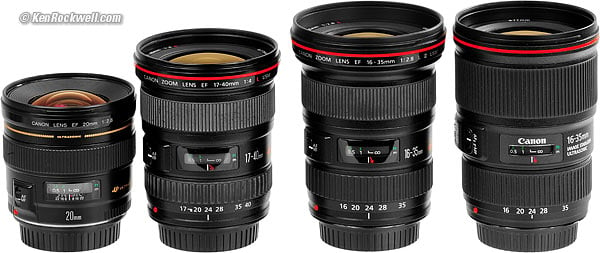
Canon 20/2.8 USM, 17-40/4 L, 16-35/2.8 L II and 16-35/4 L IS. bigger.
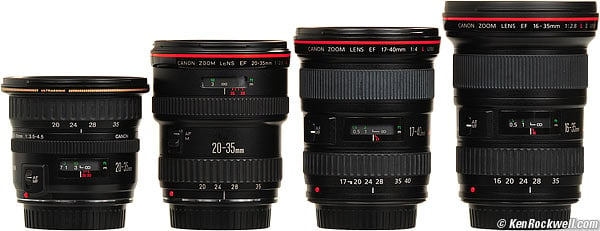
Canon 20-35 USM, 20-35mm f/2.8 L, 17-40mm f/4 L and 16-35/2.8II. enlarge.
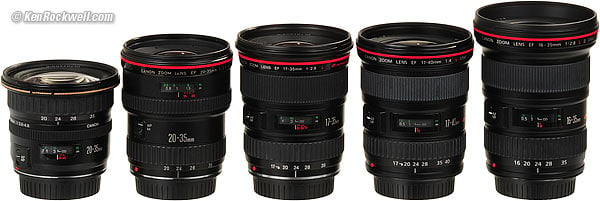
Canon 20-35 USM, 20-35 L, 17-35mm, 17-40mm and 16-35mm L II. enlarge.
NEW: Canon Ultrawide Lens Sharpness Comparison.
Canon Ultrawide Lenses Compared
RECOMMENDATIONS top
Introduction Specs Performance Compared Recommendations
I bought a Canon 17-40mm f/4 L for myself after borrowing it and a 16-35mm f/2.8L for a month. I love my 17-40mm f/4 L; it's a no-brainer for use with full-frame or 1.3x cameras. Get the Canon 10-22mm EF-S for 1.6x cameras like the 30D and Rebels.
I love my Canon 17-40mm f/4 L. It has top notch optics, light weight, durable construction, great ergonomics and costs and weighs half of what the 16-35mm L does.
The Canon 17-40mm f/4 L is a better lens for me than the Canon 16-35mm f/2.8 L, the Nikon 12-24mm and the Canon 10-22mm EF-S.
Help me help you top
I support my growing family through this website, as crazy as it might seem.
The biggest help is when you use any of these links when you get anything, regardless of the country in which you live. It costs you nothing, and is this site's, and thus my family's, biggest source of support. These places have the best prices and service, which is why I've used them since before this website existed. I recommend them all personally.
If you find this
page as helpful as a book you might have had to buy or a workshop you may
have had to take, feel free to help me continue helping everyone.
If you've gotten your gear through one of my links or helped otherwise, you're family. It's great people like you who allow me to keep adding to this site full-time. Thanks!
If you haven't helped yet, please do, and consider helping me with a gift of $5.00.
As this page is copyrighted and formally registered, it is unlawful to make copies, especially in the form of printouts for personal use. If you wish to make a printout for personal use, you are granted one-time permission only if you PayPal me $5.00 per printout or part thereof. Thank you!
Thanks for reading!
Mr. & Mrs. Ken Rockwell, Ryan and Katie.
Home Donate New Search Gallery Reviews How-To Books Links Workshops About Contact |

